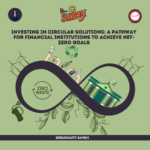–By Aditya Prakash Pandey (BKFS 2016-18)
The World Energy Outlook Report of 2015 suggests that India has the potential of around 750 GW of power through the solar energy of which it has set itself a target of 100 GW of power by the year 2022 with a current installed capacity of 12 GW (Data till March ’17). Solar capacity of 750 GW is three times of the current energy demand and hence has huge potential for fulfilling future needs. With five years till the deadline and 88 GW to go, the target seems difficult but achievable. However, project funding, cost of land and equipment and low efficiency are hindrances that cannot be ignored.
Challenges:
1) Low capacity utilization factor (efficiency)
2) Transmission and distribution losses amount to 40% of the energy generated
3) Unpredictable weather patterns and low strength of sun at times present challenges
4) Land acquisition – Land scarcity, high cost of land acquisition and strict regulations
5) Lower demand as –
- Coal sourced power is cost effective means of energy
- Unpredictability of power supply to grid by solar plants due to its reliance on sunlight
6) High initial cost, large area required for installation, maintenance, skilled labour, high temperature in some areas and lack of environmental awareness are other issues that need to be addressed
7) The auction price of solar projects has decreased drastically – Rs 15 per unit in 2012 to Rs 5 per unit in 2015 to Rs 3.3 per unit in Feb 2017. This requires cost effective solar solutions
Economies of scale – The elephant in the room
In a typical solar project, the solar module accounts for approximately 60% of the projects’ cost. The price of solar modules has declined by 35% in the past 2 years and is further expected to decline by 20% in 2017. This decline is due to the production of modules at ultra large scale by Chinese companies which enjoy economies of scale and technological and operational efficiency. The cost of these modules is around 30-35% less than the cost incurred by Indian manufacturers. Due to this, countries like China, US, Taiwan, and Germany are dumping their products in India making the sector highly competitive for Indian producers. Flexible pricing, better quality, predictable delivery and utilization of latest technologies have added to the competition. Indian manufacturers are now on the brink of shutting down their shops despite the huge domestic potential. The competition has eroded the financials and the banks are hence not willing to finance these companies. The willing FI’s are offering debts at unaffordable rates to the companies.
The other aspect is the scale at which power is being generated through solar sources. Due to variability in production (which depends on sunlight) and a limited number of plants and limited connectivity, power grids are facing challenges in anticipating the demand and supply mismatch which would vary by the hours of the day. Solar power generation of large scale will ensure sustainable growth of the solar power sector. Also, large scale projects will help in adding technological solutions (like automated maintenance) to the system to make the process effective and efficient.
Conclusion
In current scenario, solar power generation requires a capacity expansion, which depends on cost effective solar modules. Governments push to the solar manufacturing sector must be backed by financial support to these companies, therefore ensuring self-reliant sustainable growth of the sector. For Make In India to work along with cost effective green power, focus needs to be laid on financing this sector. This will also contribute to minimizing the trade deficit and contributing to the GDP.














Leave a comment